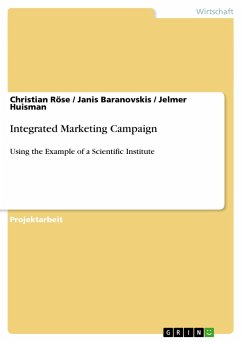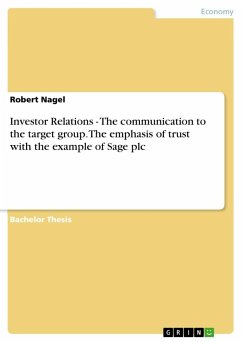Bachelor Thesis from the year 2011 in the subject Business economics - Offline Marketing and Online Marketing, grade: 1,3, EBS European Business School gGmbH, language: English, abstract: In conjunction with the advancing process of globalization the competitive environment continually intensifies (Meyer, 2002, p. 3). The possibilities to minimize costs and to increase return on sales are mostly exhausted or require a high amount of effort to be realized (Kuhn & Hellingrath, 2002, p. 1). Market saturation in industrial nations caused a swift from seller to buyer markets (Meyer, 2002, p. 4), where the major challenge for service companies is based in the flexible and adaptable fulfillment of ascending demands and expectations of its customers (Gouthier, 2006, p. 58; Grant, 1996, p. 375). Delivering an outstanding and positively surprising service to the customer can lead to competitive advantages, such as a higher willingness to pay as the study by Homburg, Koschate, and Hoyer (2005) indicates, a higher loyalty if customers are very satisfied as "the Satisfaction-Loyalty Link" by Jones and Sasser (1995, p. 95) depicts, or a increased intention to recommend the services or products of a several provider (Mittal & Kamakura, 2001).Thus, topics, such as service excellence gain importance, where companies appeal to continually improve and even perfect their service offer in order to achieve customer delight (Jonston, 2004, p. 129). Famous examples of companies that continuously strive for service excellence are Singapore Airlines and the Ritz Carlton hotels (Johnston, 2007, p. 23; Heracleous & Wirtz, 2010).By watching classical advertisement in television or radio, several companies claim to deliver excellent service to their clients although in practical business life they fail. In order to implement service excellence, managers' major issue is the combination of the apparently opposing forces of effectiveness and efficiency of their service. The view to be able to combine these two contrary forces contradicts Porter's claim for differentiation and cost leadership (Porter, 1997). Nevertheless, Heracleous, Wirtz, and Johnston (2004) emphasize the necessity to find a balance between service effectiveness and service efficiency, and Bartlett, Ghoshal, and Birkinshaw (2004, pp. 405-406) describe a symbiotic process of rationalization and revitalization as crucial to succeed in a highly competitive environment.The concept of organizational ambidexterity borrowed from organizational theory offers a response how to combine these two characteristics without neglecting one of them.








